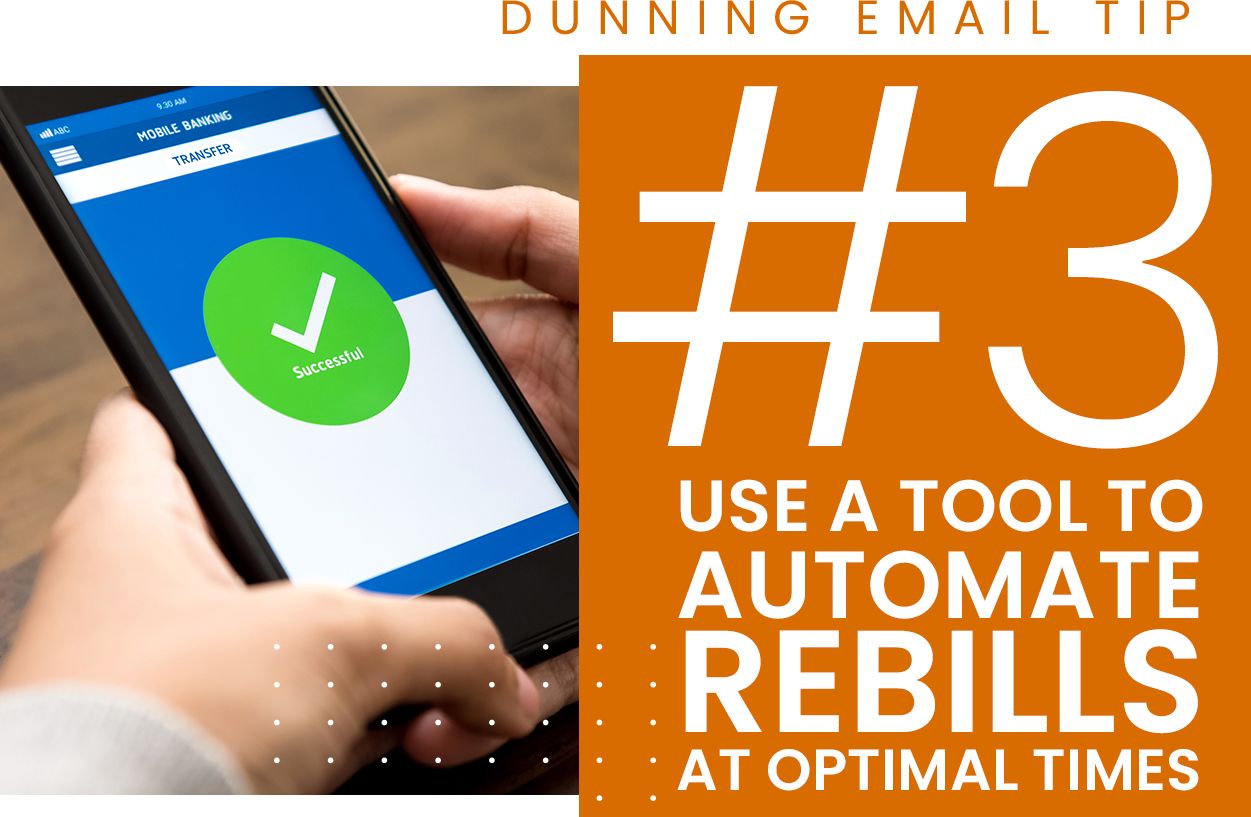Dunning emails encourage subscribers to quickly address a failed payment so you can avoid involuntary churn and costly payment retries. Learn how to craft impactful dunning emails and make your customers stick.
Updated:
January 25, 2023

A failed payment threatens the seamless consumer experience promised by a subscription service. A declined credit card payment is, in the best-case scenario, an interruption of the delivery cadence. In the worst-case scenario, it can spell the end of a customer relationship.
Every ecommerce company needs a dunning strategy to deal with declined payments. Unless a merchant has specific tools to automatically rebill a failed transaction or update outdated card information, merchants should consider how they reach out to customers after a payment declines.
Dunning emails notify subscribers of failed transactions and explain how to fix them. Even though most people want their subscriptions to stay active, a well-written dunning email can inspire customers to quickly address their payment issues.
The most effective dunning emails aren’t complex. They are short and simple — fitting everything necessary into just a few sentences and a call to action (CTA). Here’s how to create a clear, concise and persuasive dunning email.
The first step is to set yourself apart from all the other emails in a customer’s inbox with a subject line that conveys the urgency of your message. Don’t spend your time on email subject line hacks like adding emojis — this isn’t a marketing message. It’s a transactional email designed to update consumers about their orders.
Use straightforward language, so it’s clear why you’re writing. Dunning emails perform best when their subject lines contain words that spark concern — such as “failed” or “declined” — rather than euphemisms like “payment issues.” Try using language that conveys a timeline, like “Action required” or “Final notice,” so they don’t mentally file the email as something to address later.
Include your brand name in the subject line as well. You’ll give the reader immediate clarity on what payment has failed, which can motivate them to take action.

[Action Required] Your {{Company Name}} payment was declined
—
Missing card info for {{Company Name}} — Fix now
—
Final Notice — Overdue payment for {{Company Name}}
Dunning emails must communicate what the problem is and how to fix it in a brief yet personalized message. A good subject line like the ones above opens the dialogue. Your email copy should state the issue, explain the stakes and set the reader up for a successful fix. Don’t spend time on fluff; your goal is to have your customers understand what’s happening as quickly as possible.
Open your email with a personalized greeting, then jump straight into explaining why you sent the email: Their payment was declined. Then let them know briefly what the consequences of a payment failure are.
While you want your email to be empathetic and adhere to your brand voice and tone, don’t get too playful or verbose. This is a serious issue, and you don’t want to undermine its urgency.
Hi {{Name}},
We need your help! Your recent payment to {{Company Name}} was declined. There are a few reasons this might have happened:
Please update your card information by {{Date}} to prevent the cancellation of your subscription.
—
Hi {{Name}},
We encountered an error processing your most recent payment to {{Company Name}}. We don’t want to miss a shipment, but we’ll need updated credit card information before we can send your {{Item}}.
After you’ve shared the issue, it’s time to share the solution. Leave your reader with a clear CTA that tells them what to do. The easier the solution, the more likely someone is to take care of it immediately, so make sure it truly is a simple fix. Then tell them how quickly they can solve the problem and get their subscription back on track.
Your conclusion should also offer resources to answer their questions and a way to contact your company if they have any concerns about the process. Make sure the contact method you share is one your team constantly monitors and responds to quickly! Your customers will want to know you take their financial concerns seriously.

Please take two minutes to log into your account and update the information we have on file.
<<Update my billing info>>
Not sure why your card is declined? Check our FAQs or reply to this email with questions. We’re here to help you.
—
Use the link below to quickly verify your billing information. Contact us at {{Support-Email}} or reply to this message with any questions.
<<Check payment information>>
To make sure your customers don’t miss an important dunning message, create a multi-email journey for them. Sending a sequence of dunning emails is easy to do with automation. Most ecommerce platforms, including ours, allow you to set triggers to handle the sending process for you. Just make sure you set the journey to end as soon as your customer updates their payment details. Otherwise, you’ll be providing a confusing and frustrating email experience.
It’s best to set up a schedule of three dunning emails based on data from Baremetrics’ Recover tool. According to their analysis of over 1 million dunning emails, the open rate, click rate and especially recovery rate dropped off significantly after the first three emails in a sequence. It’s true you can recover more revenue if you send six emails, as some companies they tracked did. But you may also frustrate customers into never coming back if they see you as a spammy sender.
Get the most out of your dunning email sequence by differentiating each email you send. Use a different sender to prevent the emails from threading and getting buried in a busy inbox. Change up your subject lines — if someone didn’t click on your email the first time, why would they click on a seemingly identical email a few days later? And vary your body copy as the sequence goes on to make sure readers understand the urgency is increasing.
Here’s a good schedule to use for your dunning email journey:
This schedule assumes a month-long subscription period — if your customers pay weekly or biweekly, you’ll need to compress your timeline accordingly.
Now it’s time to put everything together and write a successful dunning email to send to your customers. Start with a subject line that conveys a sense of urgency, expands on the message with empathetic yet clear body copy and wraps things up with a strong CTA and contact information.
Subject: Payment Declined — Update your {{Company Name}} payment info
Hi {{Name}},
Your most recent payment for {{Item}} was declined. Our team won’t be able to ship your package until the transaction succeeds.
We don’t want you to miss your delivery this month, so let’s get this fixed. If we get the correct information within the next week, we’ll be able to send out everything on time.
Please <<log into your account>> today to update your billing information. It will only take a minute.
<<Update my payment info>>
You can also reply to this email with questions. We’re ready to help.
{{Email Signature}}
Dunning emails help you ensure subscription continuity and show your customers you care. Consumers who have to fix their billing information will appreciate clear messaging and an easy process. They’ll also appreciate getting as few emails as possible about the problem.
Creating a brief process with short emails means taking the time to optimize your dunning email series. First, ask yourself whether you need to send an email at all. Often, soft declines can be tried again without involving the customer. Use a tool like Smart Dunning to automatically rebill a customer at an optimal time based on machine learning.

Iterate on the emails you do need to send by A/B testing subject lines and CTAs to see what gets the best open, click-through and recovery rates. And track the direct feedback that comes from email responses or support tickets. Is there a question you often ask that could be answered in the email? Does your support team end up linking people to another resource (like an FAQ or knowledge-based article) more often than not? The better your initial emails meet your customers’ needs, the happier they’ll be.
Dunning emails directly help reduce involuntary churn by ensuring payments go through. When done well, they can also indirectly help by deepening your relationship with a customer. A scheduled sequence of clear and concise dunning emails can take the frustration out of the process and leave the impression of a company that cares about its customers.